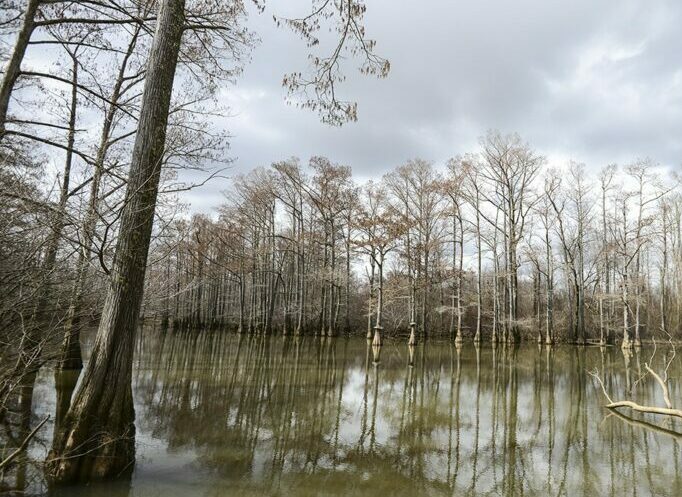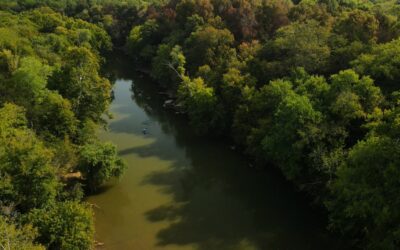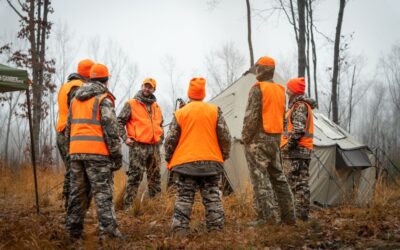Over the past ten years, economic development interests within the Tennessee Department of Economic and Community Development (ECD) have conceived and begun to implement a plan to create a greenfield economic “megasite” between Brownsville, Tennessee and Memphis, Tennessee.
A “greenfield megasite” is a tract consisting of at least 1,000 acres with water, sewer, highway, and rail access on previously undeveloped land.
This large industrial park complex was sited in an agricultural landscape that is very sparsely populated, and located just south of the Hatchie Scenic River. The state of Tennessee purchased the land from willing landowners and spent $44.3 million for 4,100 acres of land. In total, the state has spent and committed a total of $106 million for the project. Today the site has been renamed the Memphis Regional Megasite (MRM).
The primary industrial recruiting focus for the MRM has always been to secure an automotive manufacturing facility. When local officials in the area began considering all of the items and issues needed to recruit this industry, they and state officials identified the need to considered environmental permitting. Given the proposed size of an automotive manufacturing facility, officials with the MRM and the Brownsville Energy Authority (BEA) decided that BEA would handle all of the wastewater needs for the MRM. This decision resulted in BEA working with the Tennessee Department of Environment (TDEC) and consultants and engineers to design a wastewater collection and treatment system to handle the nearly one billion gallons of treated heavy industrial wastewater proposed to come from the MRM annually.
From the beginning, officials stated publicly that the wastewater from the MRM would not be disposed of in the Hatchie Scenic River.
In June of 2015 this changed.
When the drafts for the National Pollutant Discharge Elimination System (NPDES) and the Aquatic Resources Alteration Permit (ARAP) permits were released to the public, the engineering and design plan showed pre-treated heavy industrial wastewater being pumped 15 miles through a forced main sewer underneath the Hatchie Scenic River to the south Brownsville wastewater treatment plant and treated.
The plan then called for the wastewater to be pumped to a discharge pipe into the Hatchie Scenic River directly opposite the U.S. Fish and Wildlife Service’s Hatchie National Wildlife Refuge. This was the first time the Hatchie was formally identified in permitting plans to be the dumping ground for this treated waste.
Upon the realization that the Hatchie Scenic River would be the recipient of this waste rather than the South Fork Forked Deer River several citizens in the Brownsville and the surrounding areas began raising concerns at multiple levels with governmental officials and agencies. This is when the Tennessee Wildlife Federation intervened and began to advocate on behalf of the river, and its associated wildlife.
The Federation attended a public meeting on June 15 to discuss the permits applied for by BEA. At this meeting, which was well attended by the public, all but one person who spoke on the issues were opposed to the proposals.
Tennessee’s system of water regulations doesn’t always promote or encourage creative thinking at the outset, but can arrive there if our public officials pay attention to what their communities raise as concerns. When entities like the BEA begin going through a process that is rife with regulatory hoops and technical questions, they rightly and typically turn to consulting engineers and legal experts to help guide them through the process.
These firms are hired to do a job, which typically is to find a solution that will result in an approved permit, will cost the least amount of money, and will be compliant with the rules and regulations governing the waters of the state of Tennessee. This is a logical and fair approach to permitting a wastewater plant or even a megasite. However, this process does not typically allow for a larger dialogue, which needs to include a more creative and broadened discussion on alternatives.
This is where the public comes in.
The Hatchie Scenic River is a public waterway, containing public water, fish, and wildlife. And while BEA is a public corporation, there wasn’t an initial incentive for them or the MRM to think outside the box when it came to taking care of what is arguably West Tennessee’s most valuable natural resource and crown jewel—the Hatchie Scenic River.
The June 15 public meeting and the torrent of comments from concerned citizens pouring into the TDEC spoke volumes. The message was this: “It’s time for the permitting process to hit the pause button, consider all that is being debated, and have a true creative discussion about the alternatives that can and should take place. Environmental compliance is no longer an acceptable goal. We want environmental performance to be the more meaningful and valid objective.”
After the public meeting, the Federation began to engage TDEC and scheduled a meeting with state economic development officials to point out to them that for the MRM to be successful all involved must realize there were three sides to this issue: technical, political, and one of public relations. Each of these three sides posed serious challenges to the success of the MRM. To be successful it wasn’t necessary (and would worsen the situation) to have a traditional “environment versus jobs fight.” The simpler path forward was to look at alternatives to the current plans.
With some very light research, the Federation was able to identify and point out to officials at BEA that other alternatives exist. One example identified is the Chrysler automotive assembly plant in Toluca, Mexico, which successfully recycles 95 percent of its industrial wastewater.
“Chrysler’s automotive assembly plant in highly industrialized Toluca, Mexico, sought ways to decrease operational waste, reduce costs, and increase process efficiencies. Water is scarce in the region and getting scarcer as industry expands. The automaker wanted to minimize the facility’s impact on the region’s rapidly dropping aquifer, while staying within the federal government’s water quality standards for manufacturers.
Siemens installed two separate wastewater treatment systems and a water recovery system. One wastewater treatment system uses natural bacteria that biologically treats wastewater from the complex’s restrooms, showers, and other domestic areas using a sequencing batch reactor (SBR).
In addition, a manufacturing process water system chemically treats wastewater mixed with heavy metals and paint from the assembly plant. It also treats wastewater containing emulsified and soluble oils from the facility’s stamping, transmission, and engine plants.
The water recovery system consists of several multimedia filters, a two-stage RO system, a microfiltration system, and a crystallizer.
The facility now uses approximately 250,000 gallons of water in its daily processing operations, recovering more than 95 percent of its processing water. Using treated water for its 18 cooling towers also saves $72,734 annually in chemicals.
The facility now saves approximately $200,168 in chemicals and $380,945 in biological treatment annually.
Use of the water recovery system decreases the amount of water extracted from the local aquifer; this lowers the facility’s impact on the environment and saves the facility yet another estimated $359,000 per year in water costs.
Recycling the wastewater also decreases pollution and helps conserve the area’s resources, further minimizing the automotive facility’s impact on the environment.”
What this meant for Tennessee
The Federation’s position was this: Officials in Mexico had the foresight and fortitude to build an automotive plant that recycles 95 percent of its wastewater, and therefore the people of West Tennessee in the United States of America should be able to find an alternative to dumping heavy industrial wastewater and toxic metals into our only West Tennessee state scenic river.
After meeting with the Tennessee departments of Economic and Community Development and Environment and Conservation, these agencies and the permit applicant, BEA, agreed that finding a smarter way to handle the wastewater from the MRM was the right thing to do. So on August 19, 2015, the BEA announced that it was pulling back its permits for MRM wastewater. Subsequently, Economic and Community Development Commissioner Randy Boyd announced in Brownsville a few days later that the idea of dumping the MRM’s wastewater into the Hatchie Scenic River or any of our West Tennessee rivers is not going to happen, and that alternatives would be forthcoming in the next few months.
With these announcements, the Federation saw the fruits of our labor come to a positive conclusion. However, our work would not have been successful were it not for the willingness of people such as Commissioner Randy Boyd, Commissioner Robert Martineau, and Deputy Commissioner Shari Meghreblian to listen to our concerns and thoughts. It also is notable that Mr. Reggie Castelaw and the BEA were open to reconsidering their proposals. And last but certainly not least, the local citizens and landowners of Haywood County — people such as Nicholas Crafton, former state representative Bill Walker, Jerilyn Thornton, Bob Ford, Justice Lyle Reid, and many others — were instrumental in keeping this issue in front of their community.
As a result of all of these efforts, the Federation’s hope is that our children and their children will be able to enjoy and experience the venerable Hatchie Scenic River and all that it has to offer.
Featured photo: Hatchie River bottom in March, 2014




